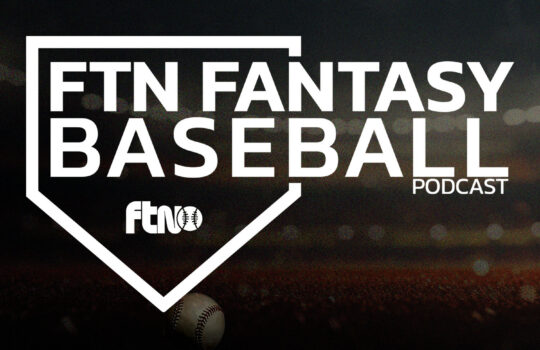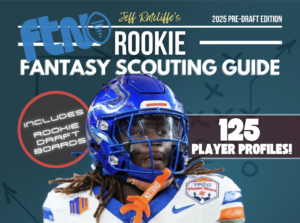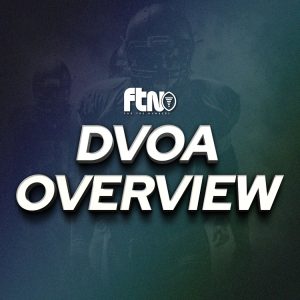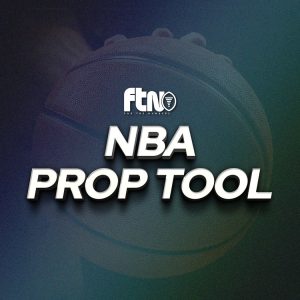
Following Tyler Reddick’s’s victory at Circuit of the Americas, NASCAR leaves Texas this week and heads to Virginia. Thus, let’s wrap up action from this past Sunday’s EchoPark Automotive Grand Prix, review numbers from last year at Richmond, and assess some expectations for this Sunday’s Toyota Owners 400 at Richmond International Raceway.
EchoPark Automotive Grand Prix Wrap-Up
Although Sunday’s race became a bit chaotic toward the end, with three different green-white-checker restarts, the end result was the way it should have been all along: Tyler Reddick crossing the finish line in first. He was the best driver all Sunday and still won despite getting off-sequence early and making an extra pit stop compared to drivers like William Byron. With his third road course victory since Road America from last July, Reddick is quickly taking the mantle of the Cup Series’ best road course driver away from Chase Elliott. The next time we’ll see drivers making right-handers will be at Sonoma in mid-June.
As per results throughout the field, don’t get too hung up on finishing position. So much of this race, and consequently DFS, was determined by those final three restarts that saw drivers like Austin Dillon, Ryan Preece, Aric Almirola and Joey Logano get dumped and lose valuable position as the field went racing by them. Furthermore, drivers like Ryan Blaney and Kyle Larson spend valuable laps down multiple laps due to blown tires and resulted in average running positions that aren’t reflective of their overall finish.
If there’s anything to be cognizant of going forward, we saw certain drivers attempt to race the event backward. which should mean we see that going forward in future road races. The surprising thing though is that it wasn’t just mid-tier and backmarkers using this strategy but potential winners, including Reddick himself, use this strategy. This blend of strategies was going to set up for a very intriguing end to the finish, but a late caution was thrown for dirt on the track that reset the field as everyone came in for gas and tires — nearly setting up its own fuel milage race as most drivers were going to end the race a lap or two short of fuel.
Finally, we know that NASCAR considers itself a part of the entertainment industry and they won’t hesitate to use any reason to throw a yellow flag to bunch the field back up and set the stage for an exciting finish. In these instances, turn one, regardless of where, inevitably turns into a slaughterhouse and collects several drivers as the field flies into a tight turn, regardless of who they bump or wreck into as they march forward. While the lineup building rules are different compared to Daytona or Talladega, road courses are quickly becoming the newest iteration of chaos on the NASCAR DFS streets and you shouldn’t be surprised to have a terrible day, ROI-wise, thanks to late restarts and wrecks.
Richmond — 2022
As stated above, NASCAR returns to Richmond Sunday for 400 laps around the short (0.75-mile), flat venue in Virginia. The Spring 2022 edition of this race played out exactly as we would have imagined, especially with just Phoenix (from a few weeks prior) as the only real indication of what to expect in the Generation Seven car at a short track.
First, just like Phoenix, the polesitter was a force to be reckoned with as Ryan Blaney led from the initial green flag all the way up until lap 128. Coincidentally, once Blaney lost the lead he would never gain it back that day. Clean air was such a drastic advantage in the initial short track package of the Generation Seven car that it allowed a car that wasn’t the best that day to just sit on the lead. Although Blaney was hands down the fastest driver in Saturday’s practice session, he was only ninth fastest in the green flag speed rankings and fourth fastest in total speed rankings.
Second, the drivers who were fighting for the lead were the drivers you would anticipate fighting for the lead and win. William Byron led 122 laps that Sunday, and was just five laps away from winning, gave us a foreshadowing of his looming dominance at Martinsville just a week later. Furthermore, it was Byron who led the second-most laps a few weeks back at Phoenix, one of the closer comparables to Richmond.
Multiple-time Richmond winner Martin Truex Jr. rose up to lead 80 laps that Sunday while his Joe Gibbs teammate Christopher Bell led 63 laps himself. Bell would go on later in the season to win convincingly at New Hampshire (probably the closest sister track to Richmond that exists on the schedule) while also going on to win at Martinsville during the playoffs.
Although he didn’t lead a lap that Sunday in early April, Kevin Harvick would finish second that day. Interestingly, the fall rendition of this race would see Harvick win.
The lesson being here; if you were strong here this Sunday in the Generation Seven car, you were probably going to continue to do so throughout the remainder of the season. Phoenix was the welcoming party while Richmond was the true litmus test for the remainder of the season.
Expectations for the Toyota Owners 400
Unlike Phoenix, there won’t be a long 50-minute practice session to help drivers shake down the track and the package. They’ll get the standard 20-minute split sessions. Although we won’t have nearly the same amount of practice data that we had at Phoenix, 20 minutes should be enough time for drivers to roll out long runs into the 15 or even 20 consecutive lap areas.
The main things we’re going to be considering at Richmond are of course practice (as Phoenix showed the changes to the Generation Seven short track package showed a pretty strong correlation between practice speed and performance in the race), starting position (another strong indicator as position retention on restarts was a major key at Phoenix), and still looking back at last year’s performance in the Gen Seven car as the drivers who were good in the initial package we’re still strong in this new iteration.












































 New York Jets
New York Jets  New England Patriots
New England Patriots  Miami Dolphins
Miami Dolphins  Buffalo Bills
Buffalo Bills  Pittsburgh Steelers
Pittsburgh Steelers  Cleveland Browns
Cleveland Browns  Cincinnati Bengals
Cincinnati Bengals  Baltimore Ravens
Baltimore Ravens  Tennessee Titans
Tennessee Titans  Jacksonville Jaguars
Jacksonville Jaguars  Indianapolis Colts
Indianapolis Colts  Houston Texans
Houston Texans  Las Vegas Raiders
Las Vegas Raiders  Los Angeles Chargers
Los Angeles Chargers  Kansas City Chiefs
Kansas City Chiefs  Denver Broncos
Denver Broncos  Washington Commanders
Washington Commanders  Philadelphia Eagles
Philadelphia Eagles  New York Giants
New York Giants  Dallas Cowboys
Dallas Cowboys  Minnesota Vikings
Minnesota Vikings  Green Bay Packers
Green Bay Packers  Detroit Lions
Detroit Lions  Chicago Bears
Chicago Bears  Tampa Bay Buccaneers
Tampa Bay Buccaneers  New Orleans Saints
New Orleans Saints  Carolina Panthers
Carolina Panthers  Atlanta Falcons
Atlanta Falcons  San Francisco 49ers
San Francisco 49ers  Seattle Seahawks
Seattle Seahawks  Los Angeles Rams
Los Angeles Rams  Arizona Cardinals
Arizona Cardinals 








 Boston Celtics
Boston Celtics  Brooklyn Nets
Brooklyn Nets  Philadelphia 76ers
Philadelphia 76ers  New York Knicks
New York Knicks  Toronto Raptors
Toronto Raptors  Chicago Bulls
Chicago Bulls  Detroit Pistons
Detroit Pistons  Milwaukee Bucks
Milwaukee Bucks  Cleveland Cavaliers
Cleveland Cavaliers  Indiana Pacers
Indiana Pacers  Orlando Magic
Orlando Magic  Atlanta Hawks
Atlanta Hawks  Charlotte Hornets
Charlotte Hornets  Miami Heat
Miami Heat  Washington Wizards
Washington Wizards  Denver Nuggets
Denver Nuggets  Minnesota Timberwolves
Minnesota Timberwolves  Oklahoma City Thunder
Oklahoma City Thunder  Portland Trail Blazers
Portland Trail Blazers  Utah Jazz
Utah Jazz  LA Clippers
LA Clippers  Golden State Warriors
Golden State Warriors  Los Angeles Lakers
Los Angeles Lakers  Phoenix Suns
Phoenix Suns  Sacramento Kings
Sacramento Kings  Dallas Mavericks
Dallas Mavericks  Houston Rockets
Houston Rockets  Memphis Grizzlies
Memphis Grizzlies  New Orleans Pelicans
New Orleans Pelicans  San Antonio Spurs
San Antonio Spurs 











